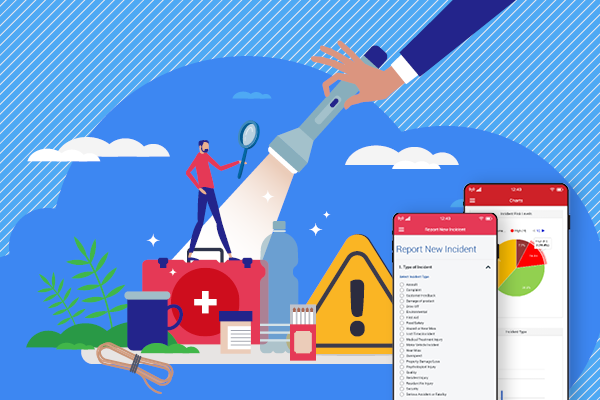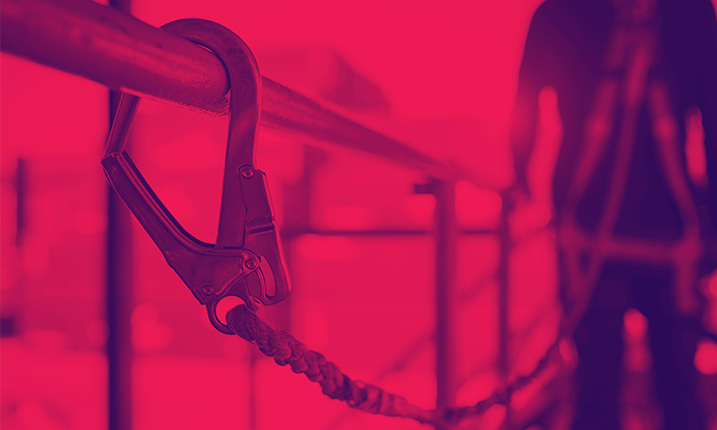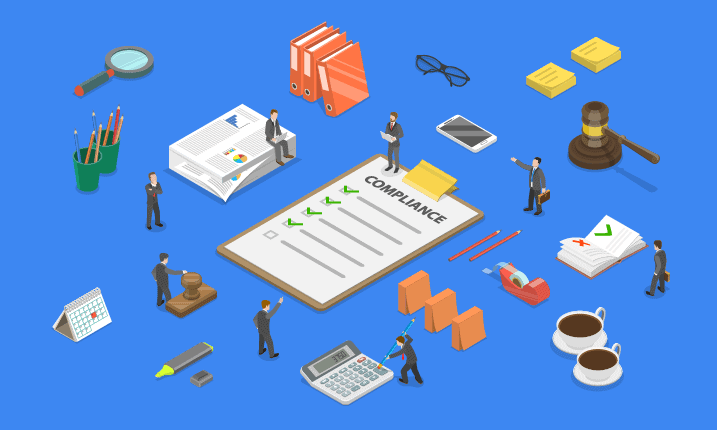

How are you managing your daily WHS responsibilities with the added risks imposed by the COVID-19 global pandemic? Keeping your workplace safe and compliant with Australian WHS regulations can be a full-time job even at the best of times.
We share five workplace safety tips from some of Australia’s leading HSE and Compliance Managers — to help you stay on top of your risk management plan and ensure that critical hazards don’t slip through the gaps.
SAFETY TIP 1
Make WHS easy for the whole team
“When you make processes easy for someone, they are more likely to do it. Easy processes help form the right habits.”
Sahra V., Power Generation HSE Manager, ALINTA ENERGY
HSE Manager Sahra V. from Alinta Energy is a firm believer that simplicity underpins good WHS management. When your people are forced to wade through piles of paper forms, spreadsheets, and home-grown systems — often varying between regional offices and job sites — hazards can be easily lost in the mix. And more hazards are created when people don’t have effective induction programs and don’t follow procedures.
Safety procedures and other administrative controls underpin and support your entire safety management plan, and are directly linked to WHS legislation and contractor compliance. It’s critically important to make your systems easy for people to use, so pay attention to a procedure’s:
- Length — people aren’t interested in reading an operational document that is 25 pages long and follows a work procedure that has 20 or 30 steps. Break the information down into manageable chunks that can be easily digested and understood.
- Layers — don’t design a procedure that needs the operator to reference multiple documents or has too many handoffs to other people. When procedures have too many layers people start taking shortcuts and skipping key steps.
- Language — procedures aren’t the place for big words, lots of acronyms and complex jargon. People are more likely to read and follow a procedure that uses common vocabulary and conversational language.
And especially make sure your safety systems integrate across departments and job sites, making it easier for quality and compliance auditing.
SAFETY TIP 2
Safety management starts at the top
“Having safety systems that are accessible to senior management during review meetings help the executive team identify, assess, and evaluate strategies that achieve a positive safety culture.”
Chris C., National Manager, Accreditation, Compliance and Safety, SCT LOGISTICS
Chris C., the National Manager for accreditation, compliance and safety at SCT Logistics knows that safety management starts at the top, but also recognises that an organisation’s top executives juggle a wide range of managerial and compliance responsibilities. Making safety easy for your whole team also includes senior managers.
Having safety systems that integrate risk management, safety inductions and training, contractor compliance, visitor entry, incident reporting, and safety auditing — all in one live system — keeps senior management in the loop. It also ensures that critical risk is acted on immediately, and included in the budget.
Did you know that Rapid Safety Systems seamlessly integrate all aspects of safety management?
Imagine your CEO being instantly advised of a compliance breach and your production supervisor being assigned a corrective action — at the same time.
SAFETY TIP 3
WHS is more than ticking the boxes
“It’s not about ticking boxes and having a piece of paper for compliance, you need a proper system with audit checks and balances. When you report a safety issue it enters the system and you know it will get managed.”
Robert M., Group Head Safety & Compliance, NOUMI LIMITED
The head of safety and compliance at Noumi Limited, Robert, is an advocate for developing a safety system that does more than tick compliance boxes. Top Safety Leaders understand that it’s not about ticking boxes, it’s about people. All leaders have a responsibility to keep workers safe.
This means:
- Making it easy for workers at all levels (including external contractors) to report safety incidents and hazards.
- Ensuring work areas, operating procedures, and safety equipment are regularly audited.
- Inducting and training staff (and contractors) when they first start work.
- Checking the ongoing skills and competencies of workers when they are on the job.
- Teaching people how to identify and respond to the hazards in their own work areas.
- Reviewing hazard control measures to ensure they are actually working and are effective.
A good safety management system ensures that compliance breaches, hazards, and incidents are immediately flagged for corrective action — and things are followed up to ensure that action does take place.
SAFETY TIP 4
Get an incident management system
“An incident reporting system ensures our people carry out investigations within a required timeframe, and our executive team get notified when critical or dangerous incidents occur.”
Maria H., National WHSE Manager, ALLIED PINNACLE
Maria H., the National WHSE Manager at Allied Pinnacle knows that safety incidents and near misses are an immediate indicator that something isn’t right in the workplace. Someone may need more training, equipment may be broken, there aren’t enough entry controls at the front gate — incident reporting and investigation helps you uncover hazards and unsafe work practices.
A good incident management system includes everyone in the organisation and has:
- Clear reporting methods so all hazards, safety issues, near misses, and dangerous incidents are immediately reported and logged.
- Relevant managers and key personnel are assigned to investigate and take corrective action.
- Executives are alerted to critical and dangerous incidents, plus they receive live updates as control measures are introduced or hazards are eliminated.
- System produces activity and status reports for HSE Managers and executive teams.
- Incidents and hazards remain active until investigated or controlled.
SAFETY TIP 5
Stop managing your contractors with a spreadsheet
“Spreadsheets are only good for the person who created the original document and knows how to use it. Plus they are so vulnerable to data loss — one person can easily wreak havoc on a single spreadsheet.”
Sahra V., Power Generation HSE Manager, ALINTA ENERGY
Managing the people who enter your workplace has never been more important. COVID-19 has introduced a range of new hazards, infection controls, and compliance obligations — and spreadsheets just don’t cut it.
Large job sites that carry dangerous goods, heavy vehicles, manufacturing plant, or food processing machinery require strict visitors controls to keep people safe. And if you are looking across a line/cell in a spreadsheet, the information isn’t immediately relatable to the (sometimes hundreds of contractors) who are actually on your worksite.
When Alinta moved to Rapid Access and Contractor Management, HSE Manager Sahra V. told us she was immediately able to:
- Use the Rapid App to identify individual contractors in the field by photograph and ID, plus check all their qualifications.
- Check contractor licenses and permits at remote sites from the head office mainframe.
- Prequalify and train sub-contractors before entry to the worksite.
- Issue reminders and compliance alerts to contracting companies about individual sub-contractors, and then sort it out offsite.
For many industries managing your contractors and site visitors is a legal requirement and spreadsheets were never designed for use outside of finance and accounting data. Use a dedicated contractor management system that was built for purpose.
Improve your safety management processes
If you’re looking for more than just workplace safety tips — but a comprehensive safety management solution that incorporates all facets of risk management, training, incident reporting and contractor management — get in touch with the team at Rapid Global. Our safety systems give you the tools you need to seamlessly manage your business risk, safety, and compliance — all in one place.







